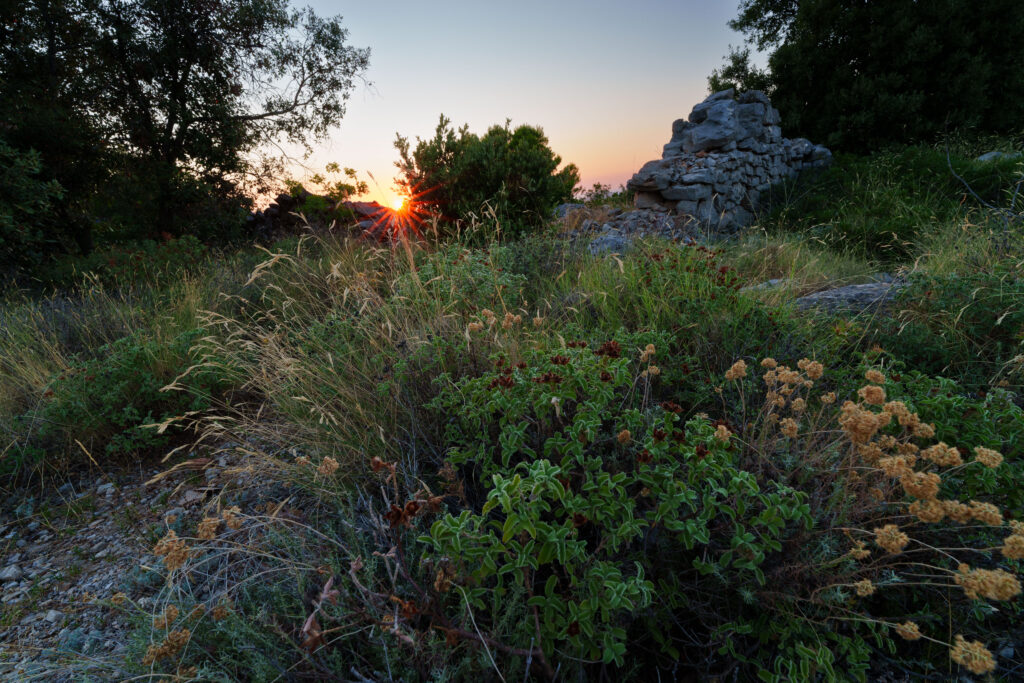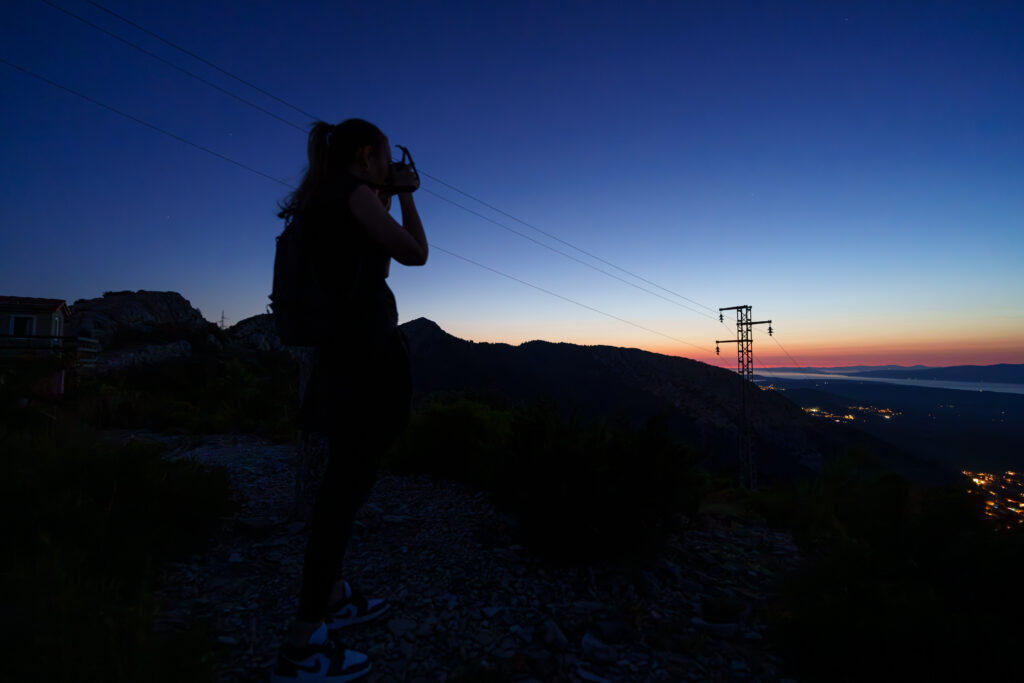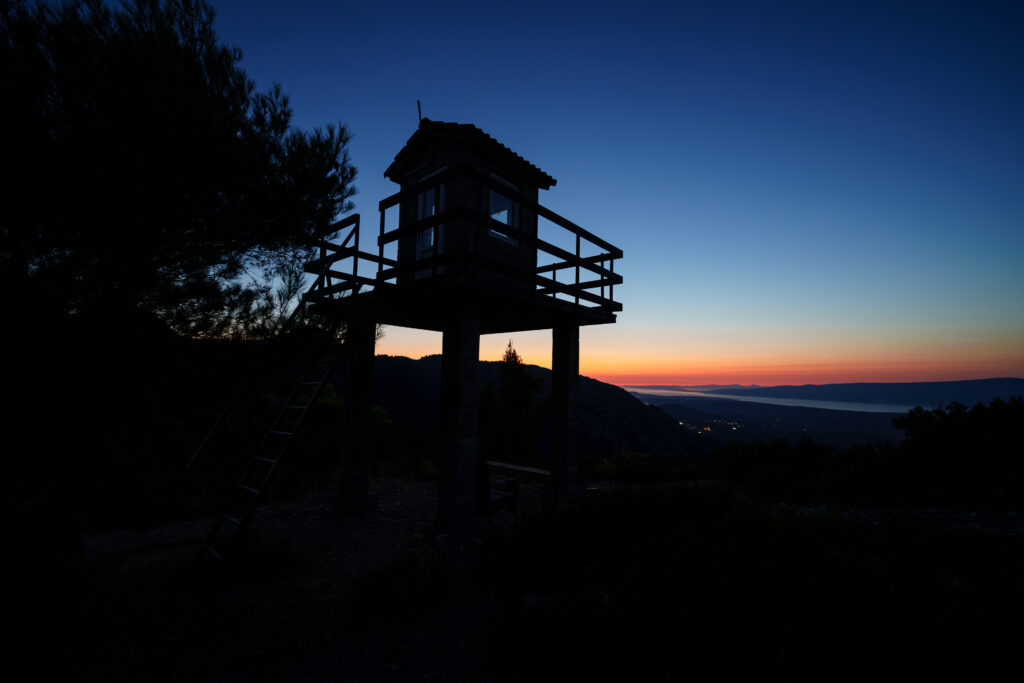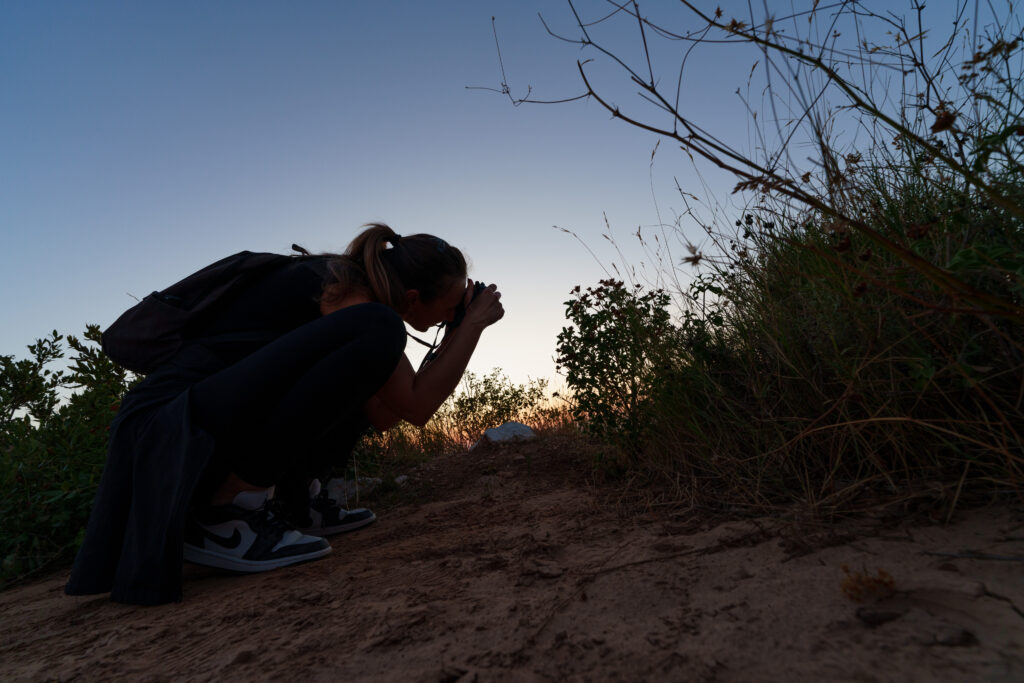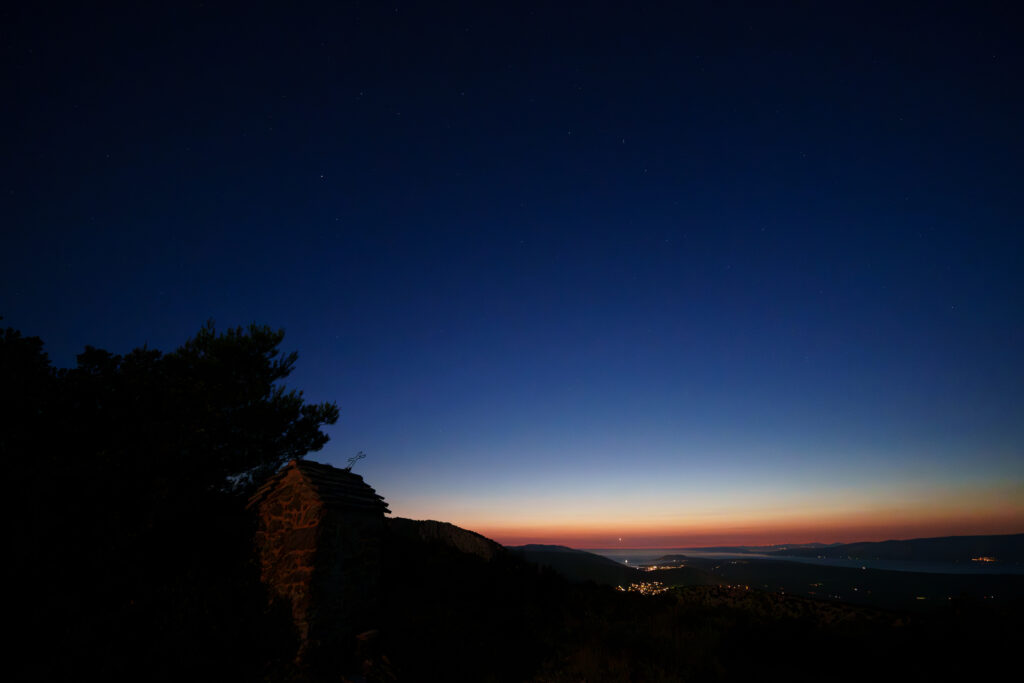I have the first batch of pictures made with the FE 14mm f/1.8 GM (and Biljana has a series with the RF 16mm f/2.8).
14mm G master is wider than the more conventional 16mm, but not so much that the lens would require adaptations to the shooting style; basically, it’s an ultrawide, and you use it as such. Biljana’s 16mm Canon focuses closer, which is very useful for certain kinds of near/far compositions, but the actually important difference is the aperture. f/1.8 really allows you to “see in the dark”, and especially combined with the sensor stabilisation in the A7RV it allows you to get sharp pictures of stars at 1/3s hand-held. Biljana doesn’t have sensor stabilisation in the Canon RP body and the RF 16mm f/2.8 doesn’t have optical stabilisation, which forced her to try insane things like 1s exposures hand-held, which of course can’t be done. However, while there was still a reasonable amount of light available, it all worked fine, and well into the deep blue hour, but not past the point where we could no longer see where we were going without a flashlight. All in all, the 16mm is a very practical lens that allows you to get f/2.8 without paying through the nose for a 16-35mm f/2.8 zoom, or having to carry it uphill for hours. I couldn’t actually evaluate sharpness of either lens because we used them for real life photography as this type of lens is supposed to be used, not taking pictures of a flat surface and then pixel-peeping the edges. The truth is, if you’re using a wide angle properly, you are perceiving flare, sun stars, contrast, colours and sharpness around the point of focus much more than anything else, and when I look at the actual pictures, both lenses did a nice job. The 14mm f/1.8 just has 1.3 stops of light advantage in the dark, which actually matters a lot if you want to hand-hold shots with stars visible in the night sky. Both lenses are very resistant to flare with sun in the frame, the contrast and colours are excellent, and the files would print big. You do, however, get what you pay for with the G master lens, which is optically better than any ultrawide has a right to be, and that’s wide open at f/1.8. Considering how shitty 50mm f/1.8 double Gauss designs are wide open, that’s actually mind-bogglingly insane, considering how hard it is to design a decent ultrawide lens. This one is not decent; it’s basically a perfect lens, to the point where I just use it as I would any other fast prime, without thinking that this shit should be impossible for an ultrawide, and in fact was ten years ago. The Zuiko Digital 7-14mm f/4, for instance, had severe flare with sun in the frame, and the total absence thereof on the G master is the most shocking aspect of its design that I noticed. If I’m trying to look for things that could be improved… there’s basically nothing. It’s reasonably small and light for what it is (the Zuiko 7-14mm f/4 zoom is much bigger and heavier, and that’s for 4/3, not 35mm), it’s reasonably priced for a top-tier lens, it’s built well and it’s optically so good it feels surreal, but in a good way, because it just works and doesn’t let you know there’s anything weird about that.
The 16mm f/2.8 Canon is impressive in its own way. It’s so small it almost falls into the category of pancake lenses; definitely pocketable, and on a general image quality scale (what you see looking at the picture as a whole, rather than magnified details) it’s excellent. The most important aspect of this is resistance to flare with sun in the frame, contrast and colours, which are all excellent. If the G master shocks you with its optical performance, this one shocks you with the fact that something this small, light and inexpensive works this well at all, in lighting conditions that are not completely unreasonable. Basically, while Biljana still had enough light to work with, she was producing pictures that are a very close match to mine, but when she ran out of light and tried to hand-hold 1/3s shots, there was a sudden drop where the shots were no longer usable due to motion blur, while I kept cranking out completely unreasonable stuff.
When I would have to hand out recommendations, I’d say both lenses are excellent for what they are, and in both cases you get good value for the money. The Canon RF is small, light, cheap and capable of cranking out great images. The G master is absolute insanity, a 14mm lens that makes a typical 50mm f/1.8 look like a piece of crap optically, is as sharp as a macro lens, produces no flare or contrast reduction with sun in the frame and lets you take pictures of constellations handheld.
But I would say that the Canon RF works better in daylight or at least reasonable amounts of light, for anything from interiors, urban photography to landscapes, and the G master is an optically ideal lens without any real limitations, unless you want to use filters, which can’t be done due to a bulbous front element. The actual question is whether you want to take pictures that really take advantage of such a lens, and for most people the answer will probably be “no”, and I would recommend something like a 16-35mm f/4 zoom, which can give you the ultrawide angle but with the flexibility to use something more reasonable for most shots. There’s also a skill issue with the ultrawides; you really need to know how to work such a lens and compose things in ways that will take advantage of it, instead of getting empty compositions that look like shit. So, I would definitely recommend your first ultrawide to be a 16-35mm f/4 zoom, because those are cheap, practical and reasonably light, giving you the option but without forcing it upon you immediately. However, if you find out that such an ultrawide zoom is what you use most of the time, and mostly at the wider end, then an ultrawide prime might be a thing for you. Both Biljana and I actually prefer 35mm fast primes for most things, and we find their perspective more natural, so ultrawides won’t be the first tool we reach for, but they are very nice to have when we need them.

